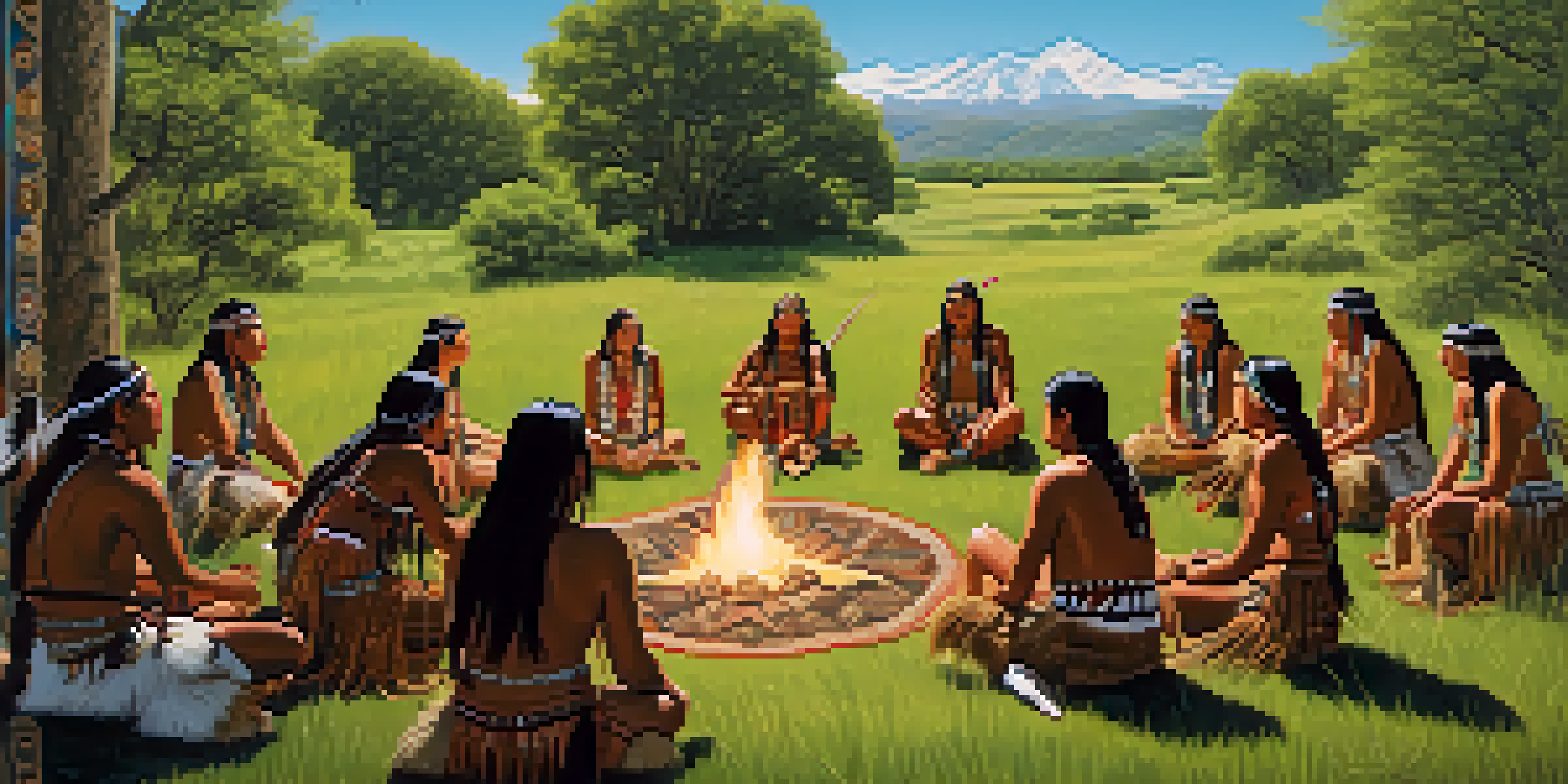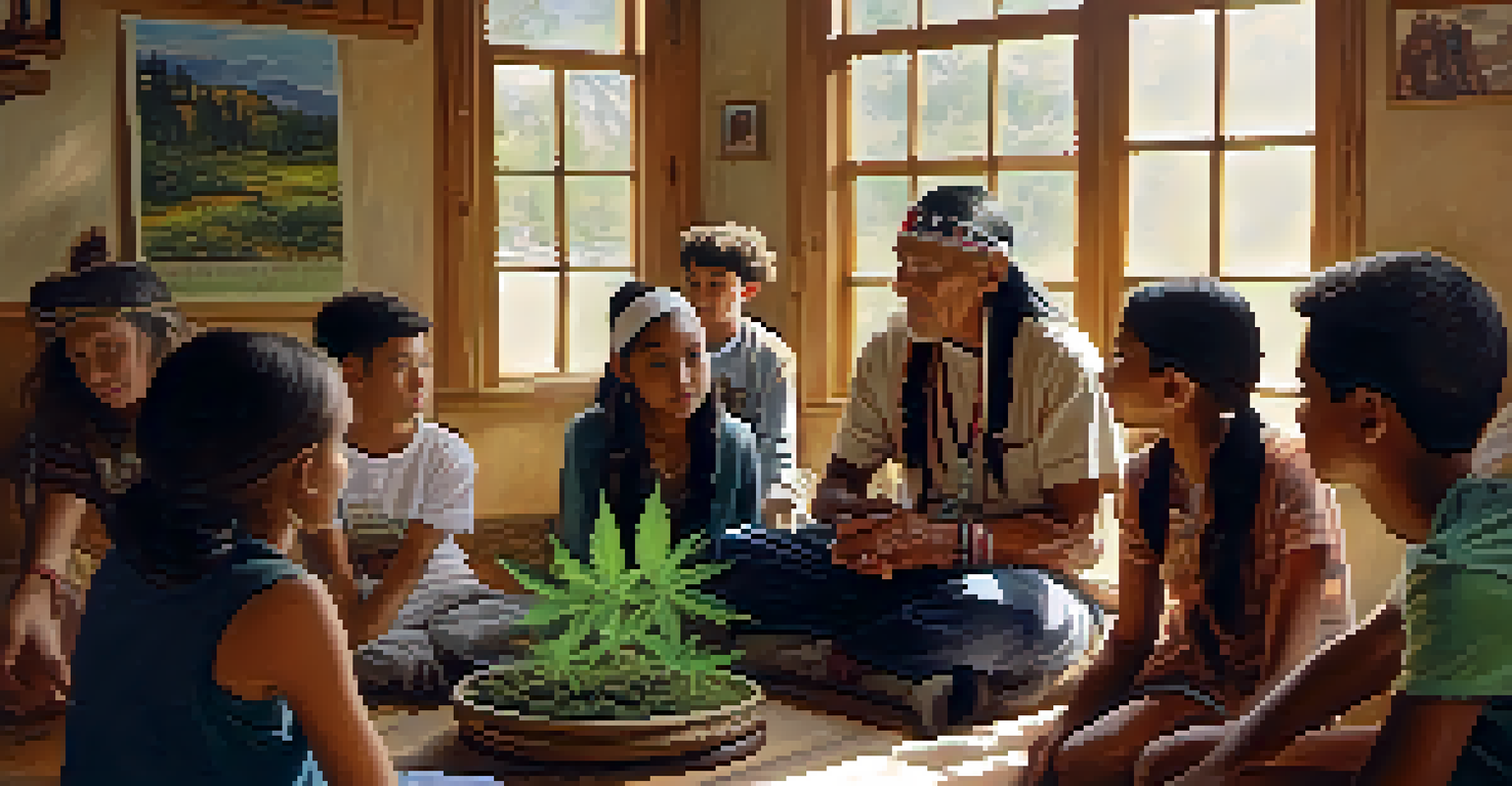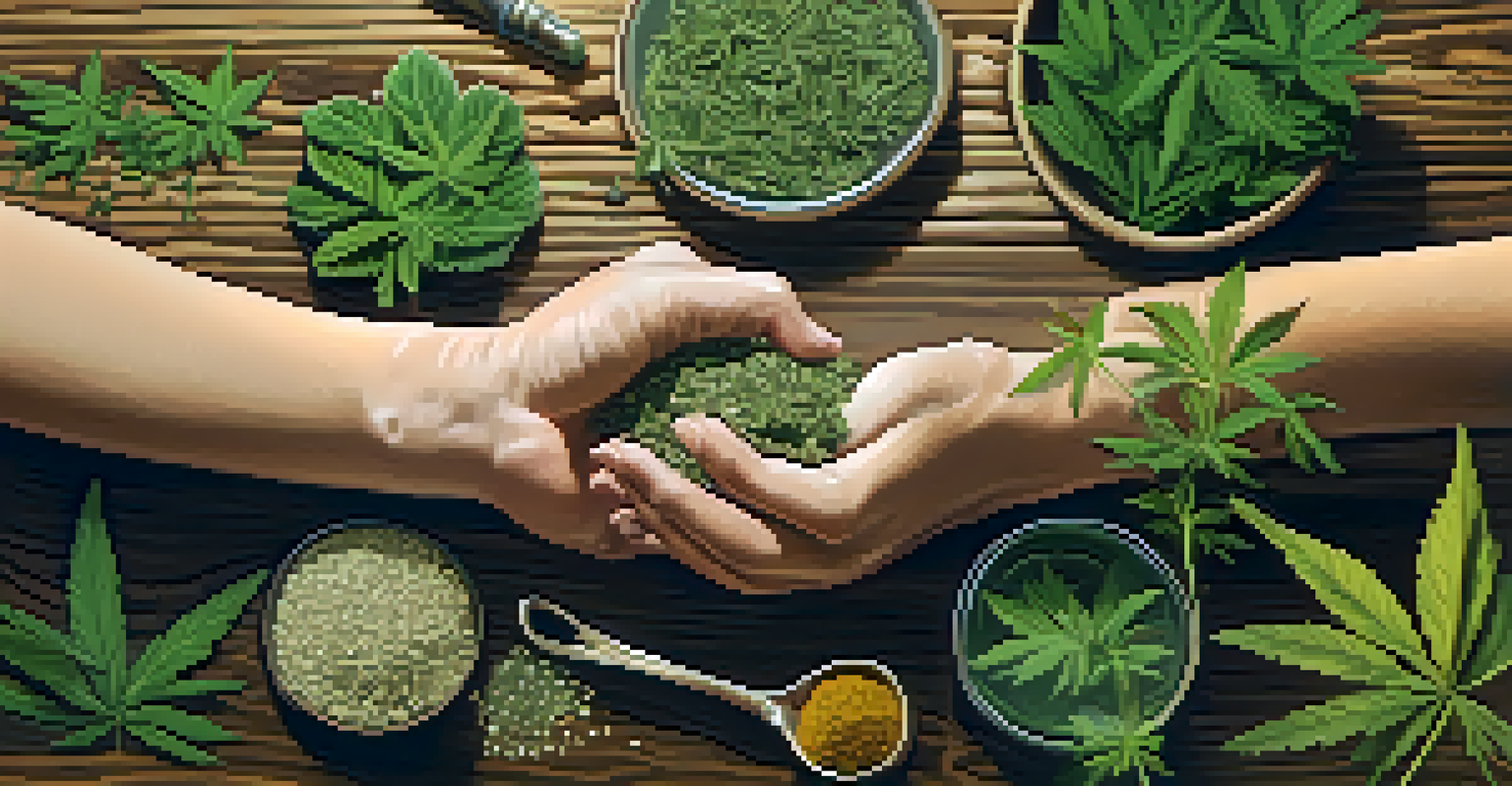The Therapeutic Use of Marijuana in Native American Traditions

Historical Context of Marijuana in Native American Culture
Marijuana has a rich history in Native American cultures, where it has been utilized for centuries. Indigenous peoples often viewed the plant as a sacred gift, using its properties in various spiritual and healing practices. By integrating marijuana into rituals, they connected with the earth and sought guidance from the spirit world.
The plant is a bridge between the material and the spirit; it allows us to access realms of healing that are often overlooked in modern medicine.
The use of marijuana was not just for recreational purposes; it served a profound role in addressing physical ailments and emotional struggles. For many tribes, it was a natural remedy that complemented traditional medicine, emphasizing a holistic approach to health. This historical context highlights the significance of marijuana in the cultural tapestry of Native American life.
As society evolves, the understanding of marijuana's therapeutic potential continues to grow. Recognizing its historical roots within Indigenous practices offers a valuable perspective on the ongoing conversations about marijuana's role in modern medicine.
Marijuana as a Healing Tool in Traditional Practices
In various Native American traditions, marijuana is used as a healing tool during ceremonies and rituals. It is believed to facilitate communication with the spirit world, enabling individuals to seek guidance and find clarity in their lives. This connection to spirituality often enhances the healing process, allowing for deeper emotional release and understanding.

Additionally, many tribes incorporate marijuana into herbal medicine. They may combine it with other natural remedies to address issues like pain, anxiety, and inflammation. This blending of practices showcases the adaptability and resourcefulness of Indigenous healing methods, which prioritize harmony with nature.
Marijuana's Cultural Significance
Marijuana holds a sacred place in Native American culture, serving as a vital tool for spiritual connection and holistic healing.
The therapeutic properties of marijuana, such as its analgesic and anti-inflammatory effects, align well with traditional beliefs about healing. This convergence of ancient wisdom and modern science underscores the importance of respecting Indigenous knowledge as we explore the plant's full potential.
Cultural Significance and Spiritual Connections
For many Native American tribes, the use of marijuana is deeply embedded in their spiritual beliefs and practices. It is often seen as a way to connect with ancestors and the natural world, promoting a sense of unity and balance. This spiritual dimension adds a layer of meaning to its therapeutic use, making it more than just a medical remedy.
Understanding the cultural significance of marijuana is vital in appreciating its role in fostering resilience and healing within Native American communities.
Ritualistic use of marijuana can evoke a sense of community, as individuals come together to share experiences and stories. These gatherings foster a supportive environment where healing can take place on multiple levels – physically, emotionally, and spiritually. This communal aspect of marijuana use reflects the importance of collective well-being in Native American cultures.
By understanding the cultural significance of marijuana, we can appreciate its role in fostering resilience and healing within Native American communities. This perspective invites us to explore the broader implications of integrating traditional practices into contemporary healthcare.
Modern Perspectives on Marijuana in Indigenous Healing
In recent years, there has been a renewed interest in the therapeutic use of marijuana among Native American communities. As legal frameworks around cannabis evolve, many tribes are reclaiming their traditional practices and adapting them to modern contexts. This shift is empowering Indigenous peoples to take control of their health and healing methods.
Some tribes have initiated programs to educate their members about the benefits of marijuana, blending traditional knowledge with contemporary research. These educational efforts aim to dispel myths and promote informed decision-making regarding cannabis use. By embracing both ancient wisdom and modern science, they are redefining what healing looks like in their communities.
Challenges in Therapeutic Use
Native American communities face legal and social obstacles that hinder their traditional use of marijuana for healing practices.
This modern perspective also highlights the importance of autonomy as tribes navigate the complexities of cannabis legislation. As they advocate for their rights to use marijuana in healing practices, they contribute to a larger conversation about cultural preservation and health equity.
Challenges Faced by Native American Communities
Despite the historical and cultural significance of marijuana, Native American communities face numerous challenges in its therapeutic use. Legal restrictions and stigma surrounding cannabis can hinder access to natural remedies that have been used for generations. This creates a tension between traditional practices and contemporary regulations.
Moreover, the commercialization of marijuana can threaten Indigenous sovereignty. As large corporations enter the cannabis market, there are concerns about the exploitation of Native traditions and knowledge. Striking a balance between economic opportunity and cultural integrity is crucial for many tribes as they navigate this evolving landscape.
These challenges underscore the need for a supportive framework that respects Indigenous rights and traditions. By addressing these issues, we can help ensure that Native American communities can continue to practice their healing methods without compromising their cultural values.
The Role of Education in Promoting Traditional Healing
Education plays a vital role in preserving and promoting the therapeutic use of marijuana in Native American traditions. By teaching younger generations about the cultural significance and healing properties of the plant, tribes can ensure the continuity of their practices. This transmission of knowledge empowers individuals to embrace their heritage while fostering a sense of responsibility toward their community.
Workshops and educational programs have emerged within various tribes, focusing on the medicinal aspects of marijuana and its historical context. These initiatives often involve elders sharing their wisdom and experiences, creating a rich learning environment. This intergenerational exchange strengthens community bonds and reinforces the importance of traditional healing methods.
Education's Role in Healing
Educational initiatives within tribes are essential for preserving knowledge about marijuana's therapeutic benefits and cultural importance.
Moreover, as awareness grows, there is a greater opportunity to advocate for the inclusion of traditional practices in broader healthcare discussions. By highlighting the benefits of Indigenous healing methods, we can contribute to a more holistic understanding of health that respects diverse perspectives.
Looking Ahead: The Future of Marijuana in Native American Healing
The future of marijuana in Native American healing practices is poised for transformation as societal attitudes continue to shift. Increasing acceptance of cannabis may open doors for tribes to reintegrate marijuana into their healing traditions more fully. This resurgence could lead to innovative approaches that blend ancient wisdom with modern therapeutic strategies.
Additionally, as research on marijuana's therapeutic benefits expands, Indigenous communities can leverage this knowledge to advocate for their rights to use the plant in healing. Collaborations with researchers and healthcare professionals may further validate traditional practices and promote their acceptance in wider medical circles.

Ultimately, the future depends on a collective effort to honor Indigenous traditions while navigating the complexities of modern healthcare. By respecting and supporting Native American communities in their journey, we can contribute to a more inclusive and diverse understanding of healing.